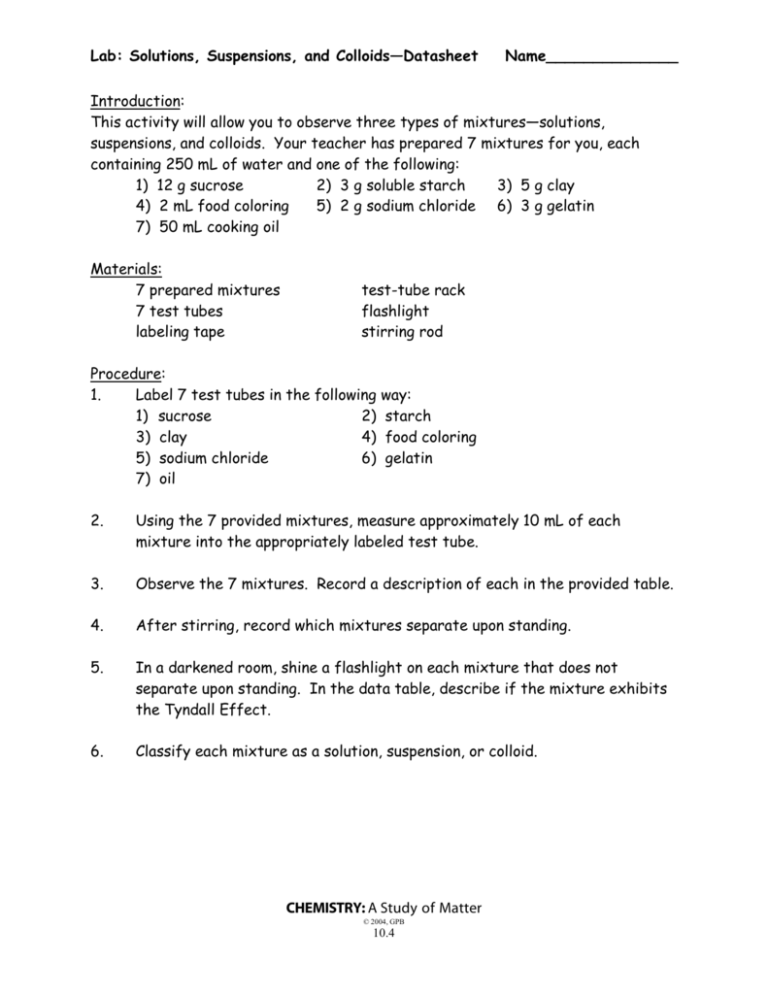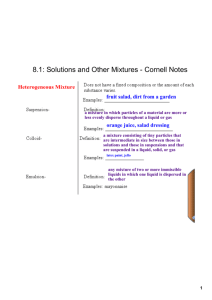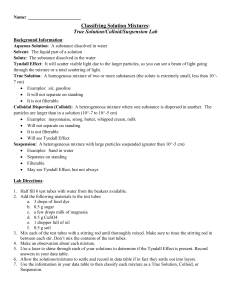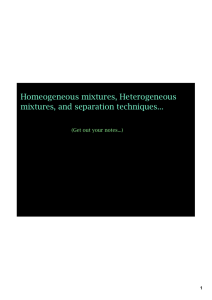Solutions, Suspensions, Colloids Lab Datasheet
advertisement

Lab: Solutions, Suspensions, and Colloids—Datasheet Name______________ Introduction: This activity will allow you to observe three types of mixtures—solutions, suspensions, and colloids. Your teacher has prepared 7 mixtures for you, each containing 250 mL of water and one of the following: 1) 12 g sucrose 2) 3 g soluble starch 3) 5 g clay 4) 2 mL food coloring 5) 2 g sodium chloride 6) 3 g gelatin 7) 50 mL cooking oil Materials: 7 prepared mixtures 7 test tubes labeling tape test-tube rack flashlight stirring rod Procedure: 1. Label 7 test tubes in the following 1) sucrose 2) 3) clay 4) 5) sodium chloride 6) 7) oil way: starch food coloring gelatin 2. Using the 7 provided mixtures, measure approximately 10 mL of each mixture into the appropriately labeled test tube. 3. Observe the 7 mixtures. Record a description of each in the provided table. 4. After stirring, record which mixtures separate upon standing. 5. In a darkened room, shine a flashlight on each mixture that does not separate upon standing. In the data table, describe if the mixture exhibits the Tyndall Effect. 6. Classify each mixture as a solution, suspension, or colloid. CHEMISTRY: A Study of Matter © 2004, GPB 10.4 Data: MIXTURE BRIEF DESCRIPTION SEPARATES UPON STANDING (YES OR NO) EXHIBITS TYNDALL EFFECT (YES OR NO) CLASSIFICATION (SOLUTION, SUSPENSION, COLLOID) Sucrose Starch Clay Food coloring Sodium chloride Gelatin oil Conclusions: 1. Define the Tyndall Effect: 2. a) If the mixture separates upon standing, the mixture is a ______________. b) If the mixture does NOT separate upon standing and the Tyndall Effect is NOT seen, the mixture is a _____________. c) If the mixture does NOT separate upon standing and exhibits the Tyndall Effect, the mixture is a _______________. 3. Solutions do not exhibit the Tyndall Effect. Why? 4. Describe the term “emulsion”: CHEMISTRY: A Study of Matter © 2004, GPB 10.5






